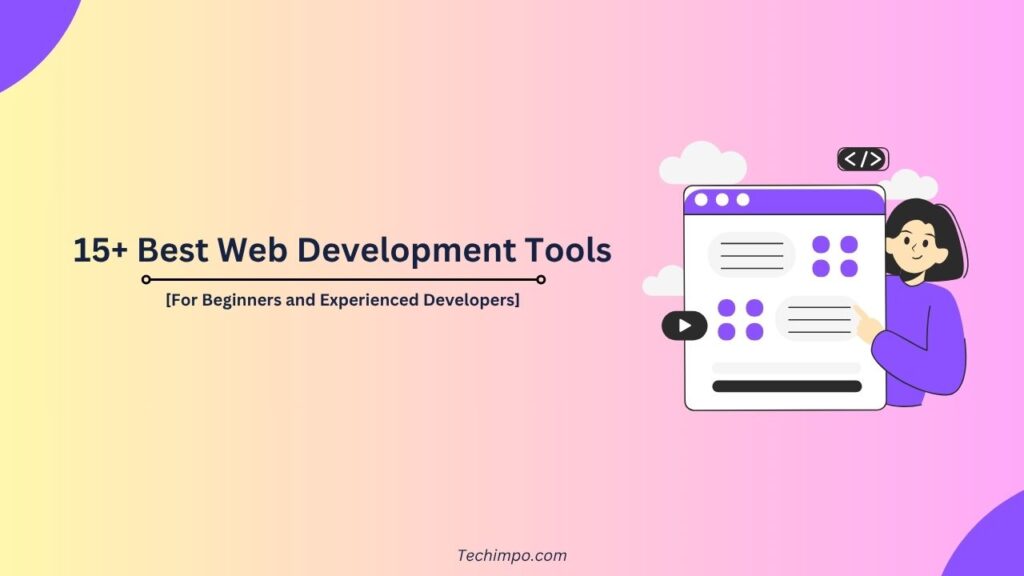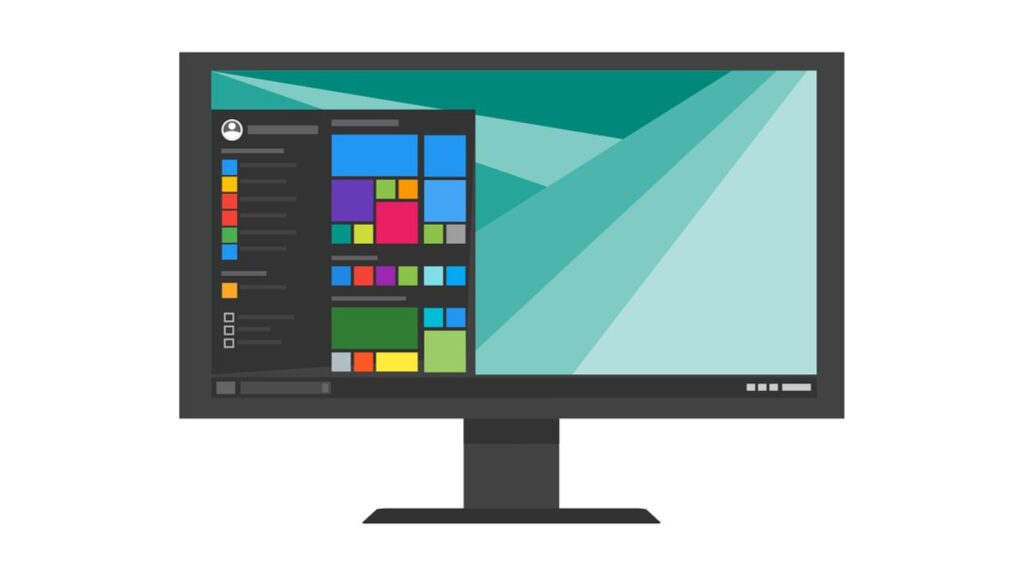The right selection of tools is required to ensure efficiency, collaboration, and scalability in the web development process. The article below delves into the 15+ best web development tools for both beginners and experienced developers.
But before we jump into the main part of this article, let’s first understand what web development is and what web development tools are.
What is Web Development?
Web development is the complete process of designing, building, and maintaining websites and web apps. It involves the use of various programming languages, such as CSS, HTML, etc, as well as frameworks like Cypress, Jest, etc, and tools like React Native, Circle CI, etc.
These days, web development being a critical part of business has put web developers in high demand. But without the aid of the best web development tools, it’s not possible to develop high-quality websites and web apps, making it essential for web development professionals to have a good command of these tools.
What are Web Development Tools?
The tools that are put to use to design, build, test, and maintain websites and web apps are referred to as web development tools. They include software apps, frameworks, utilities, and libraries that help streamline the process of web development.
Some tools are used in the front-end development (front-end tools), and some in the back-end side (back-end tools). Similarly, there are some project management tools and IDEs (Integrated Development Environments) as well.
Top Web Development Tools List
Keeping in mind the crucial factors like cost, security, scalability, complexity, and support, we have suggested below the top web development tools [top 10 for beginners and top 5 for advanced web developers].
Top 10 Web Development Tools For Beginners
For those who have just started their career in the web development industry, here is the list of the top 10 best web development tools:
1) GitHub
It is a cloud-based platform that provides a web-based graphical interface for managing Git repositories and allows open-source collaboration. The platform also offers many tools for project management. In its free plan, you will be provided unlimited collaborators and repositories along with storage space of 500 MB.
If you require some extra features (such as advanced auditing, etc) available with the platform, you should go for its paid plan that also offers access to the GitHub Codespaces.
2) Bootstrap
Bootstrap is a front-end framework that helps developers create responsive and mobile-first web applications quickly and efficiently. It is a widely used tool that provides pre-written HTML, JavaScript, and CSS components, enabling developers to save a huge amount of time that would otherwise be consumed in manual coding.
Bootstrap is customizable and also offers features like a grid system and browser compatibility. If you know the basics of HTML, JavaScript, and CSS, you can navigate the tool easily.
3) Visual Studio Code
The next beginner-friendly tool on our top 10 web development tools list is Visual Studio Code, and it is an open-source code editor. The editor runs on macOS, Windows, and Linux. It provides support for code analysis tools. In addition, it also allows integration with other development tools such as Git, ESLint, etc.
There are some built-in features, including auto-complete, syntax highlighting, etc, that enable you to code faster with more ease. And, as far as the pricing is concerned, Visual Studio Code is 100% free to use.
4) Chrome Developer Tools
These tools include both web editing as well as debugging tools built directly into the Google Chrome browser. With the aid of these tools, it becomes easy for web developers to view & update the styles of web pages and debug JavaScript code. They also help optimize the site’s speed.
The key features of these tools include local overrides, console utility, device mode, etc. These development tools also offer shortcuts that help in running tasks such as disabling JavaScript and navigating the user interface.
5) Sublime Text
The best tool for a beginner who has just started out learning to code is Sublime Text. It is a lightweight text editor. You can use it to code, prose, and markup. Its key features, like Goto Anything, Python API, Minimap, Multiple selections, etc, make it a great tool.
You can download this tool for free, but you can’t use it without purchasing the license. For personal use, the license will cost you $99. And, if you need to use it for business purposes, the license will cost you $65/year.
6) Sass
Sass is the next tool on our list and is a popular preprocessor scripting language that extends CSS. It allows you to use features such as nested rules, variables, mixins, and more. With Sass, you can also learn to make your websites as it allows you to alter fonts, colors, and other elements of the user interface.
It is a beginner-friendly tool with a good reputation and also offers access to the authoring frameworks, including Compass, Bourbon, and Susy.
7) Marvel
Marvel is a collaborative design platform that is web-based and offers prototyping as well as testing features. You can use this platform to quickly design various projects. The tool facilitates a user-friendly interface that makes it easy to use the tool for creating design specifications.
The tool also offers a free plan with some limited features. But if you require more features, there are three types of premium plans to choose from: Pro, Team, and Enterprise. The Pro plan is available at $12/month; the Team plan costs $42/month; and the Enterprise plan is offered upon request.
8) Ruby on Rails
RoR is a robust full-stack framework with useful features, such as modifying SQL queries and connecting apps’ databases. There are 3 environments in a Rails app: 1) Development, 2) Testing, and 3) Production.
This framework is 100% free for use. With the aid of RoR, modifying code and adding new features become quite easy. Some free plug-ins are also provided. And, testing codes through RoR also helps remove bugs easily.
9) Grunt
It is a robust JavaScript task runner used to automate repetitive tasks such as minification, unit testing, compilation, and more in web development workflows. This tool enables consistent implementation of coding style guides across your codebase, thus ensuring readability and consistency.
Grunt reduces development time and thus improves the efficiency of the project. It also features image optimization capability. Other key features include npm integration, high customizability, etc.
10) Node Package Manager
This tool (npm) is a package manager for JavaScript and is used to install, share, manage, and deploy code packages for Node.js and front-end projects. Its free version offers unlimited public packages.
In case you want enhanced functionality, npm offers 2 premium or paid plans as well: Pro and Team. The Pro plan is available at $7/month, and the Team plan will also cost you $7/month.
Top 5 Web Development Tools For Advanced Web Developers

For advanced web developers, we have listed below the top web development tools with the use of which experienced professionals can easily scale up their development projects:
1) React
React is also known as React.js. It is a UI development framework that is open-source and is based on the JavaScript library. It is a fast speed tool and popular among experienced developers. React is used in front-end development and is a great tool for both mobile app as well as web development.
Virtual DOM is among the top features of this tool. And, you will end up saving a lot of time that would otherwise be wasted in rewriting code as React.js allows the reusing of the components.
2) Angular
The next tool on our list of the best web development tools for advanced developers is Angular. It is a framework used in front-end development. You can use it to develop a diverse range of applications, including SPAs, PWAs, and even large apps.
Angular allows users to modify the app’s data via UI (user interface). With the UI components offered by the tool, you can create dynamic web apps fast.
3) Postman
Postman makes tasks like building, testing, sharing, and modifying APIs easy for web developers. Initially, it was just a Chrome extension, but it is now among the top testing tools for APIs.
The tool offers a free version, but with its basic functionality only. If you want to use some advanced features that it can offer, you will need to buy one of its 3 paid plans (Basic, Professional, and Enterprise) as per your requirements.
4) Kubernetes
Kubernetes is used to deploy, scale, and manage modern web apps. It is an open-source platform that can organize the application containers into logical units, enabling easier discovery and management.
It supports continuous deployment and monitoring of applications, helping prevent total outages. Portability, self-monitoring, and storage orchestration are among Kubernetes’ key features.
5) Docker
Last but not least is Docker on our list. It is an open-source platform that offers both free and paid plans. You can use it to deploy apps in virtual containers. With the use of Docker containers, you can deploy as well as scale apps fast across various environments.
There are 3 types of paid plans to choose from if you require some advanced features: Pro, Team, and Business.
The Pro plan will cost you $5/month, and the Team plan is available at $9/month/user. Its Business plan, on the other hand, can be subscribed to at the price of $24/month/user.
Bonus Tool
– Atom
Atom is a free, open-source desktop application that is typically used to edit source code and text. This tool has been built by the GitHub community and provides built-in Git control. It is written in HTML, JS, Less, etc.
Conclusion
Web development tools are like building blocks for the process of developing web-based products. But choosing the right tools to develop a robust web platform becomes a daunting task without proper guidance.
The list of the best tools provided above will not only make the task of choosing the ideal options easier but also save you a lot of time.
Read the above article again if you were not fully attentive while reading it for the first time, and also share it with others, using the social media sharing buttons provided below.
[Also Read: Top 10 Tech Tools Every Job Seeker Should Know About]




